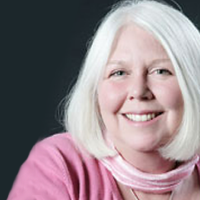Commentary on Isaiah 50:4-9a
Isaiah 50 occurs in the second half of a section scholars call “Second Isaiah,” Isaiah 40-55, which arose toward the end of the Babylonian exile, as King Cyrus of Persia overcame Babylon’s regional dominance and established a new empire.
Second Isaiah’s composer(s) wrote in hope of uniting scattered Judah once again in Jerusalem, and inspiring fellow Israelites to rebuild the city destroyed decades before. For more on this time see my commentary on Isaiah 35 on September 6, 2015.
On the model of individual prophets and divine spokespersons found in previous scripture and called God’s servants, Isaiah 40-48 had repeatedly claimed that Israel, the nation, was God’s servant (see particularly Isaiah 41:8-10; 43:10; 44:1-3, 21; 45:1-4; 48:20). Like predecessors such as Moses when pressed into holy service, Israel seems to show reluctance and misunderstanding regarding its role before God (40:27; 42:19-22; 49:3-4). Despite this reluctance, the prophet projects for Israel a transcendent greatness, calling the nation into service not only toward its own people but toward the world’s nations, the whole realm of the all-creating God (42:1-9; 49:5-10).
Beginning in Isaiah 49, portraits of this collective figure take on ever more vivid personal characteristics, as Servant Israel is shown articulating both his former reluctance and his present acceptance of this calling as a prophetic change agent. Here, increasingly, the servant is the model nation as the prophet knows it can be and hopes it will be.
In Isaiah 50:4-9, Servant Israel speaks once more, this time describing himself as both learner and teacher. Every educator knows there is nothing to teach that we didn’t first learn, and learn well. The speaker describes himself listening every morning to God’s instruction, willingly, persistently, eagerly.
A new motif enters in verse 6 that will reappear in chapter 53: God’s servant’s violent opposition by others. Causes are left unstated. We aren’t told whether the foes are Babylonians or fellow Israelites, nor does it really matter. Like the Psalms, which portray dynamics of human relationships while leaving particulars unstated, this passage does not tell one person’s story so much as it describes a stance of valiant faithfulness despite ugly opposition. In God’s presence, it’s not that enemies disappear, but that their fearsomeness shrinks.
This passage echoes an earlier expression of hope against opposition. The book of Lamentations had introduced two characters speaking as the people’s representatives. The first is Daughter Zion, personification of the city itself, its walls and buildings and spirit, who prays for her people. The other is a figure who introduces himself in chapter 3 simply as “the one who has seen affliction under the rod of God’s wrath.” This one uses searing metaphors to describe his sufferings, saying that God had walled him about, chained him up, shut out his prayers, and made his paths crooked (Lamentations 3:7-9).
What is remarkable about this figure is not that he so eloquently describes his own sufferings. Rather, it is that he expresses hope at all. Here is what he brings himself to say, not because he sees it but because he persistently believes it:
But this I call to mind, and therefore I have hope:
The steadfast love of the Lord never ceases;
God’s mercies never come to an end;
they are new every morning.
He goes on to describe a stance of expectancy. The hope he affirms still awaits vindication:
The Lord is good to those who wait, to the soul that seeks God.
It is good that one should wait quietly for the salvation of the Lord.
It is good for one to bear the yoke in youth,
to sit alone in silence with the Lord has imposed it,
to put one’s mouth to the dust (there may yet be hope)
to give one’s cheek to the smiter, and be filled with insults.
He expresses hope that God sees injustice and exercises compassion, and that the appropriate human stance before God is to lift up hearts and hands. He seeks resolution neither in understanding nor in outcome. He simply prescribes a response, a stance of creaturely hope that God’s goodness will in the end prevail, a stance of hope sturdy enough to withstand affliction, a stance that maintains integrity without defensiveness and humility without abjectness. One can hardly think this lamenter could advocate such a stance without having lived it as well.
In Lamentations 3 a new and creative response to suffering begins to emerge, a response that does not explain or justify, but simply endures with hope. Articulations like this enabled Judah to survive the sixth century B.C.E. Without such expressions Judaism would not have survived, and Christianity would not have been born.
This is where Isaiah 50 enters the picture. The prophet repeats theme after theme from Lamentations, describing himself doing all that the lamenter had prescribed. Like that lamenter he walks in darkness, without light, and envisions a stance of trust despite confusion, despite opposition, despite present straits. The prophet teaches this vision to others, beckoning them to endure with hope, and through their endurance to become God’s light to the nations. Over and over the prophet tells a suffering audience that the things they have endured have meaning, and that their life has a future.
Such a stance is not adopted easily. Ambiguous realities still persist. Throughout faith’s history, many turning points have presented themselves, many ambiguous moments at which decisions have been made to choose trust. In every instance, some individuals and communities have found themselves unable or unwilling to adopt the role presented here. And in every instance, more than we can possibly know, some have trusted God through the midst of terrible darkness. Despite distress and opposition, they maintained their integrity. And just as the New Testament Gospel writers saw this paradigmatic servant in the suffering and integrity of Jesus, we too see in Jesus’ example, following the servant portrayed here, a pattern for ourselves.
Faithful roads often proceed through dark places and require sturdy trust. They sometimes require resistance to wrongful accusation, and always commend respect and advocacy for others who are wrongly harmed. Among all the rich legacies of our faith is this one, that even without explanations we may take a stand, a stand of hope in God’s justice and mercy, a hope that shapes those who hold it, morning by morning, into faithful servants of God.


September 13, 2015